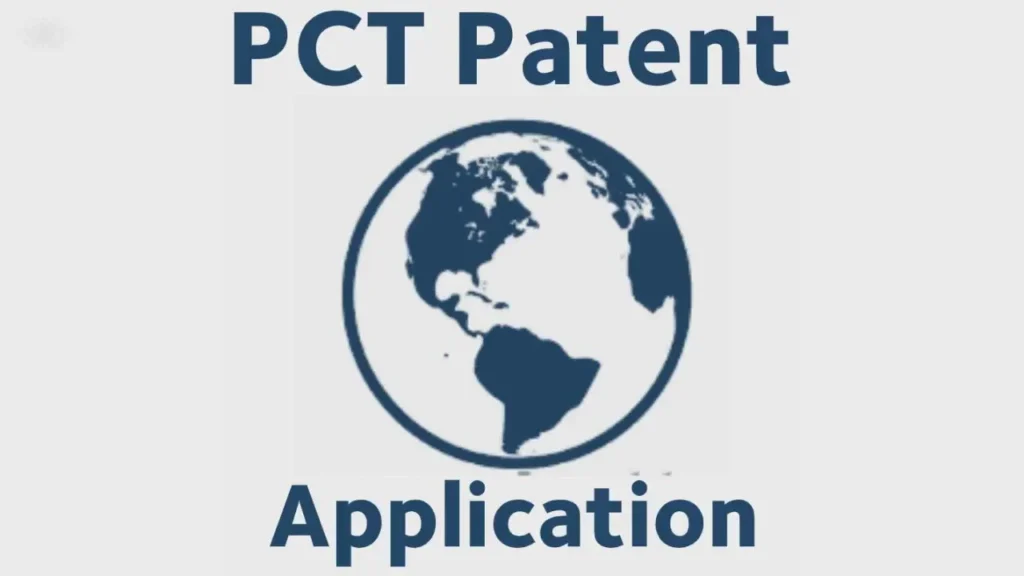The important step into achieving global success through intellectual property (IP) is to extend its protection beyond domestic markets, as an innovator, an inventor, or as a company founded in India. A patent is a territorial right and therefore you have to make applications in every country you want protection of your invention. This is a detailed manual, the aim of which is to de-mystify the process of filing a patent application abroad in India such that anyone, including an individual inventor, a small company and a giant corporation is able to grasp easily.
The Fundamental First Step: The Foreign Filing License (FFL)

There is a certain process to be checked prior to considering any of the international filing options, and it is the Foreign Filing License (FFL) provided by the Indian law and being a required part of the proceedings preceding the international filing under the Indian law.
What is an FFL?
Foreign Filing License is a written permission issued by Indian Patent Office (IPO) to an Indian resident which can enable such party to submit a Patent application in a foreign jurisdiction. This is a legal provision under the Section 39 of the Patents Act, 1970 as a safety measure that protects the national security of the country especially when it comes to defense related invention or atomic energy.
Who needs an FFL?
It is not a requirement of nationality but just a residency based requirement on the FFL requirement. It is an important difference.
Indian Residents: An individual or any company who has been regarded as a resident of India under the Income Tax Act will be required to obtain FFL prior to submitting an application patent on a foreign country.
Indian Companies: An Indian Company as a resident company under the law must also adhere to this rule although the inventors may not be Indian residents.
Non-resident Indian citizens: An Indian citizen who has migrated to work in a foreign country (e.g., the USA or Europe) normally does not require an FFL, because the condition is not applicable to those who are not resident.
How to get an FFL?
The compliance with this regulation can take place in two major ways:
File First and Wait: In India file a patent application first and then await at least 6 weeks. Unless the Indian Patent Office issues some direction regarding secrecy in this time frame you can register the respective application in any other nation. This represents the most popular path.
Direct Filing under Permission: In case you want to file a patent application directly on a foreign country rather than first filing in India you have to file a request of an FFL to IPO in Form 25. The IPO usually takes about 21 days to get rid of such requests.
Consequences of Non-Compliance
- The inability to obtain an FFL when it is necessary will be a serious consequence, which may include:
- Possible criminal penalties, including jail, and/or fines.
- The next Indian patent application regarding the same invention can be considered as abandoned.
- The Indian patent (where it is granted) is revocable.
So this is why by far the most important initial step in your international patent strategy is compliance with FFL.
Choosing Your Foreign Patent Filing Route

After satisfying the FFL requirement, India inventors and companies have three options, chiefly, to apply for a patent application in a foreign country. Your strategic objectives, budget and the number of countries of which you are seeking protection is what will determine the most appropriate route to take.
1. The PCT (Patent Cooperation Treaty) Route

Patent Cooperation Treaty (PCT) is an effective and convenient scheme that has eased the application of patent protection in more than 150 member-countries or more. Under the administration of the World Intellectual Property Organization (WIPO), the PCT is not a patent grant system; it is an international (patent) filing system.
How the PCT Route Works:
Single International Application: You are making one single so-called international patent application to the Indian patent Office (IPO) as Receiving Office (RO/IN) or to the WIPO international bureau (RO/IB). The application is a single one that is recognized by all member states of PCT.
Longer Priority Period: Unlike other patents, the PCT gives you an important grace period (30 or 31 months after your earliest priority date) before you have to make a choice of which particular countries to count on to provide you with patent protection. With this time, you will have a lot of time to:
Test the business potential of your invention in various markets.
Identify prospective licensors or capital investors.
Assemble the required amount of money to register at the national level.
International Search and Opinion: The International Search and Opinion expands on the international phase of the patent process by discussing how a prior art search is done and how a written opinion on the patentability of the invention is given. This report will help you to determine the success potential of your invention so that you will not waste money in national phase investigation.
National Phase Entry: Once the 30/31-months period has passed, you need to go through the so-called national phase process in each country that you are interested in having a patent. This includes your application translation to the local language, national fees payment, and the appointment of the local patent agent. Your application is then scrutinized by the national patent office based on its own patent law and the PCT search and opinion will now be used.
Advantages of the PCT Route for Indian Applicants:
Cost and Time Efficiency: A PCT application entails its costs, but as compared to separate applications made to the multiple countries, a PCT application may prove to be economically viable. It enables you to postpone the burdensome expenses of filing in a country.
Simple Filing: It is much easier as compared to filling numerous applications in various formats and languages at the same time.
Strategic Flexibility: The 30-month window is quite long and this gives you a good time to research on the market and develop smart strategy that you will use to make the right decision on where to spend money to protect an invention using patent.
2. The Paris Convention Route

Another possible way of applying a patent internationally is the Paris Convention on the Protection of Industrial Property which could be used in case you are sure about a particular group of countries. India is the signatory to the Paris Convention.
How the Paris Convention Route Works:
First Filing in India: You need to enter India as a first country to claim the priority, i.e., you need to file a patent application in India and the date you filed the patent application in India is called the priority date.
12-Months Window: During a rigid period of 12 months after your Indian same filing day you can submit an independent application in any other member country of Paris Convention. The subsequent foreign applications can claim the benefits of priority on your Indian application and therefore they will be considered as filed the same moment as your initial Indian application.
Direct National Filings: Under this path, a patent is directly filed with a patent office of each country. To pursue it, each application is an individual process, each needs its own documents, translations and fees.
Advantages of the Paris Convention Route for Indian Applicants:
Speed: From this route you can be faster than the PCT route, since you can initiate the national examination meet in each country as soon as possible as opposed to having to wait until the international phase is completed.
Targeted Filing: This is good to do when you intend to file in only those few, particular countries and you do not want the luxury of the PCT longer filing span.
3. The Direct Filing Route

It is both an option that is the least complex, as well as, constrained. It consists in direct filing the patent application with a patent office of the particular foreign country without previous filing in India or following the PCT path or a Paris Convention filing.
How the Direct Filing Route Works:
FLL is Compulsory: As Indian resident, you need to have first gotten an FFL made available at Indian Patent Office (Form 25) before you can go ahead with direct filing in any foreign nation.
No Priority Claims: Because you are not claiming a priority date off of an earlier Indian application, the filing date in the foreign country gives you your priority date.
Advantages of the Direct Filing Route for Indian Applicants:
Simplicity: In the event that you simply require that patent protection in just a certain overseas market, this can be the most important and straight forward way to go.
A Step-by-Step Guide for Indian Innovators
Step 1: Disclosure of Inventions and Prior art Search
Action: Record all information about what you have invented, research thoroughly about the patentability of your invention by carrying out adequate and active after-researches to ascertain that there is no prior art to what you have invented. It may be in-sourced or outsourced with a patent expert.
2: making the Foreign Filing License (FFL) application.
Action: You decide to file first in India and wait 6weeks or use form 25 to apply direct FFL. This is a non-compromising measure among the inhabitants of India.
Step 3: Writing Patent Application
Action: Develop a solid and comprehensive patent specification, which encloses description of the invention, claims and drawing. This is a very important step and it is also strongly advised that one takes the help of a patent agent.
Step 4: Choosing Filing Route for International
Action: Based on your budget, time line and target states, pick the best option: PCT, Paris Convention, or Direct Filing.
Step 5 Application Filing
PCT Route: Filing one international application with the Indian Patent Office (IPO) as the Receiving Office.
Paris Convention Route: To file an Indian patent first, and after 12 months of filing, filing separate national applications in the target countries.
Direct Filing Route: You have received your FFL, now make the application directly to the patent office in the foreign country.
Step 6: National Phase Entry (In the case of PCT route)
Action: Before the 30/31 months deadline, file the national phase in the jurisdictions that you have chosen. This includes the appointment of local agents, payment of fees and submission of translation.
Step 7: Scrutiny and Entry
Action: Reply to the exam report and objections by the patent office in each of the countries. Your local patent lawyer will take you through this process. When the patents pass all the objections, the patenting process becomes possible.
Key Takeaways for Your Global Patent Journey
Nationality is not the Factor: Only Indian residents but not mere citizens qualified under the FFL requirement.
Plan Ahead: An international patent strategy must be laid down long before the priority dates and international treaties to be exploited.
Engage a Pro: The laws regarding patents in other countries are complicated. It is critical that when working on your patent with a foreign country, including India, work with an experienced Indian and international patent attorney in order to make sure that the work you do will be complaint and thus you have the best opportunity to be successful.
Budget: Filing a patent internationally is very costly. Add to them government fees, attorney fees, and cost to translate it in each country.
PCT is an Effective Means: On average, a majority of Indian firms and inventors intending to secure their inventions in various markets get the optimal mix of strategic adaptability and cost control through the PCT system.
These pieces of advice will help you feel free to enter the realm of foreign patent applications and obtain the necessary international patent protection of your invention.
How Intellect Bastion helps?
Intellect Bastion is the company you can rely upon to anchor through the international patent filing maze. We know what Indian innovators and companies go through and offer complete services to help you to protect your intellectual property on an international level. Being a team of qualified patent professionals, we have expertise in advising our clients that you should not forget about the significant role of Foreign Filing License (FFL) in the very beginning as it is required by the Indian law to be properly handled. We sit down with you and draw a road map on how to file strategically in countries that you would like to patent your invention(s) and how to go about it and whether it is PCT, Paris Convention or direct route- which would be the best method to use with respect to your invention and your business objectives. Through our global network of patent attorneys we can simplify the whole process: comprehensive patent drafting, filing of the patent in the selected countries and filing office actions as well as providing feedback on your patent applications in all target countries, all you have to do is work on the patent, your specialty: the invention.
Get in Touch with Intellect Bastion for expert guidance:


Author
Bhawna Kaur, Patent Assistant at Intellect Bastion






